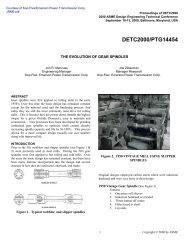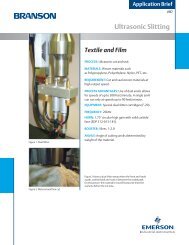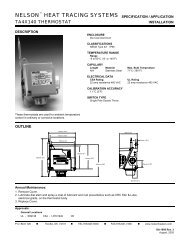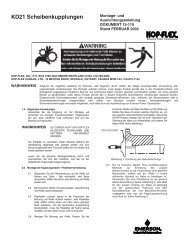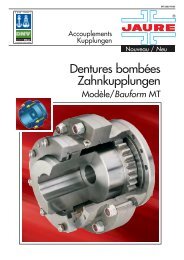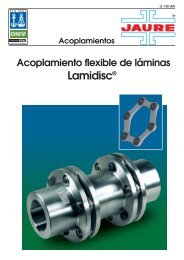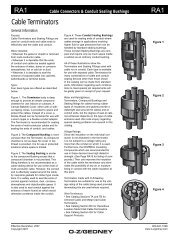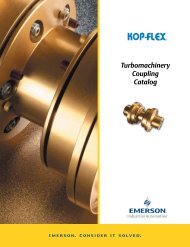Application Note CTAN #132 - Emerson Industrial Automation
Application Note CTAN #132 - Emerson Industrial Automation
Application Note CTAN #132 - Emerson Industrial Automation
You also want an ePaper? Increase the reach of your titles
YUMPU automatically turns print PDFs into web optimized ePapers that Google loves.
<strong>Application</strong> <strong>Note</strong><br />
<strong>CTAN</strong> <strong>#132</strong><br />
The <strong>Application</strong> <strong>Note</strong> is pertinent to the all AC and DC Drives<br />
Line Reactors<br />
Line Reactors (sometimes called Line Chokes) are a common power accessory for electronic<br />
variable speed drives. These components add an extra margin of protection for AC and DC<br />
drives by reducing the devastating effects of power line transients resulting from Power Factor<br />
Correction Capacitor switching, heavy load switching, lightening storms and general power grid<br />
switching.<br />
AC Drive <strong>Application</strong>s:<br />
• Offers reduction of input line current harmonic distortion by reducing the current Form<br />
Factor (Peak to RMS value) thereby improving power factor and helping to meet IEEE 519<br />
criteria.<br />
• Improves input line current balance on rectifier input PWM AC Drives due to line voltage<br />
imbalance.<br />
• Reduces nuisance over-voltage tripping of drives due to transient voltage spikes and<br />
general power line notches.<br />
• Offers “in-rush” protection to input rectifiers caused by sudden power line surges and sags.<br />
• Reduces ripple current in the DC Bus Capacitor bank thus extending their life due to lower<br />
internal heating.<br />
• When used on the output of the drive, helps to reduce Output voltage dv/dt thereby<br />
providing a degree of motor protection from Long Lead Effects.<br />
DC Drive <strong>Application</strong>s:<br />
• Reduces “crosstalk” between multiple SCR drives by reducing line notching and<br />
subsequent “dv/dt” mis-firing/bridge failures.<br />
• Eliminates SCR failures caused by high di/dt levels associated with “stiff” or power factor<br />
corrected power lines. Consult also : Power Line Considerations<br />
• Line Reactors tend to filter power line electrical noise/interference created by drives so that<br />
other line powered sensitive electronic equipment may function properly.<br />
• For more on the Topic of Line Reactors consult <strong>CTAN</strong>144<br />
<strong>CTAN</strong>132.doc v1.5 1 1/21/2008
General <strong>Application</strong> Information<br />
AC LINE<br />
Line Reactor<br />
AC LINE<br />
• When used on the Input<br />
of a Drive, they offer<br />
protection to power line<br />
surges and spikes.<br />
• Improves input line<br />
current balance on<br />
rectifier input PWM AC<br />
Drives due to line voltage<br />
imbalance.<br />
• Reduces ripple current in<br />
the DC Bus Capacitor<br />
bank thus extending their<br />
life due to lower internal<br />
heating.<br />
AC LINE<br />
• When multiple drives are being<br />
operated from a common power<br />
line, one reactor per drive<br />
provides the best surge<br />
protection.<br />
• Individual reactors reduce crosstalk<br />
( drive to drive interference).<br />
A single line reactor serving<br />
multiple drives will not provide<br />
optimum protection or harmonic<br />
reduction when the system is<br />
lightly loaded.<br />
Click on the blue link below to obtain additional information on Line Reactor/ Part Numbers etc<br />
Line Reactors<br />
http://www.emersonct.com/download_usa/literature/catalog/LineLoadReactors.pdf<br />
It should be noted that the illustrations are for discussion purposes only and are not actual<br />
construction drawings. Disconnects, circuit breakers or fusing may be also be required to meet<br />
actual code regulations.<br />
<strong>CTAN</strong>132.doc v1.5 2 1/21/2008






